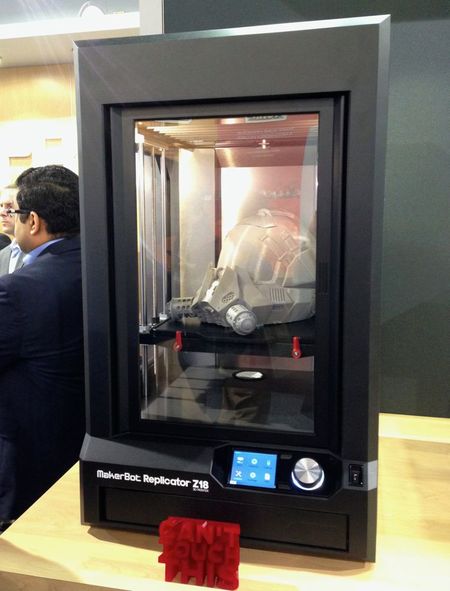Of all the 3D printers marketed by MakerBot since its founding, we find the Replicator Z18 to be the most curious. While previous models (and even the new Mini and Replicator) seemed to be logical extensions and modifications of prior units, the Z18 is quite different:
- It’s in a completely different price range: whereas previous models were all priced from USD$1000-3000, the Z18 is priced at USD$6499.
- It’s huge: the Z18 boasts a massive 42.5L print volume, whereas it’s “predecessor”, the Replicator 2 had only a 6.7L volume. That’s an increase of over six times!
- It includes a true, heated chamber: The Z18 includes the very first heated chamber from a major manufacturer, a feature previously available only on much more expensive Stratasys commercial equipment.
It’s clear that MakerBot is attempting to address an entirely new market with the Z18. It’s price is far beyond affordability by home or hobby users; instead they’re focusing on professionals, such as architects and designers, who can afford – and make good use of – the Z18.
But here’s the curious part: a heated chamber obviously reduces warping while printing large objects, particularly when using ABS plastic. ABS is notorious for severe warping when not in an environmentally controlled environment. But there’s a problem.
The Z18 does not print ABS. It prints PLA plastic. Only.
Why put such a limitation on a machine that could so clearly wonderfully print ABS? We think the answer is competition. If the Z18 were able to print ABS, it would likely kill the market for Stratasys’ low-end commercial 3D printers, the Mojo and the uPrint. These machines not only cost double or more the Z18’s price, but they also require expensive plastic filament spools. It may be that Stratasys corporate asked MakerBot to hold off on the ABS capability.
Nevertheless, we suspect some will attempt to print ABS plastic on the Z18 anyway.


